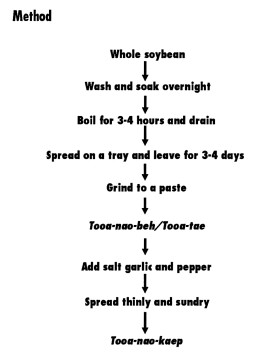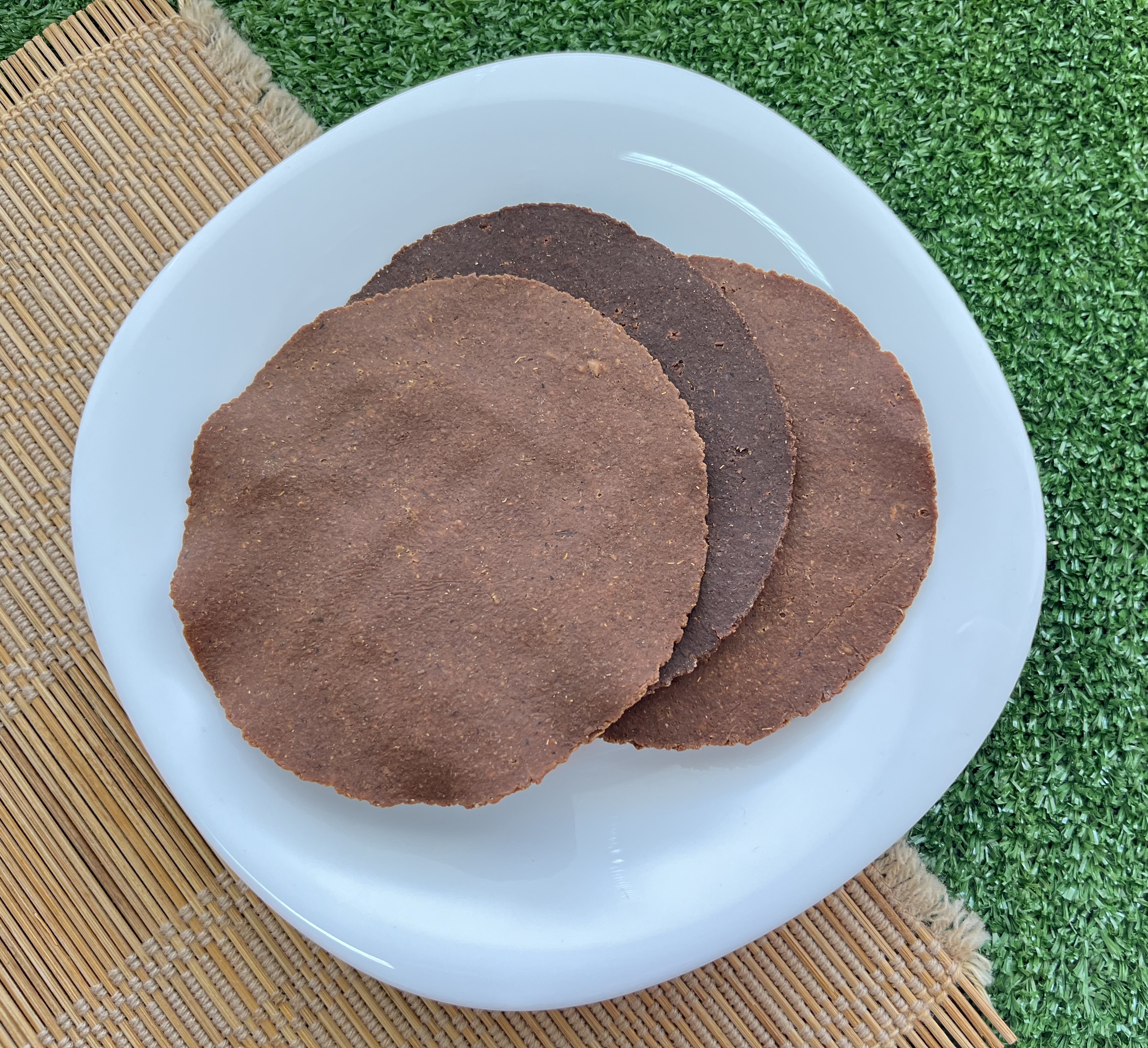Skip to main content
- Name (Thai)
-
ถั่วเน่าแผ่น
- Name (English)
-
Dried fermented soybean chip
- Local name
-
Tooa-nao-khem Tooa-nao-beh Tooa-tae Tooa-nao-kaep
- Product
-
Soybean
- Ingredients
-
Soybean: Glycine max (Tooa-leuang). Garlic, salt, pepper.
- Fermentation
-
3-4 days.
- Storage life
-
2 days for freshly prepared paste, and 2 months for the dried chip.
- Microorganisms
-
- Properties
-
Brownish yellow paste, with a little salty taste and strong smell or light brown dried chips with the same taste and smell.
- Method
-
1. Wash the soybean and soaked overnight. Boil on low heat for 3-4 hours then drain. Place the beans on a layer of banana leaves on a bamboo tray and also cover with banana leaves. Leave to ferment for 3-4 days. The cooked beans can also be wrapped in banana leaves and left in a sunny place for 2-3 days.
2. Grind the fermented mass into a paste. Add a small amount of salt, minced garlic and pepper and mix well.
At this stage the product is called Tooa-nao-beh in the North and Tooa-tae in the Northeast. In the North the paste may be spread in small thin patches on banana leaves and sundried to form chips. These dried chips are called Tooa-nao-kaep and normally kept in plastic bags or jars for further use. Sometimes they are roasted and ground into powder which is stored in a closed jar. It is more practical to use this powdered form. Tooa-nao-kaep must be roasted before cooking.
- Production
-
In home scale industry in the North and Northeast.
- Consumption
-
The paste is cooked as a main dish and in the North, the dried chips are also used as a main ingredient in cooking condiments which are served with fresh or boiled vegetables.




